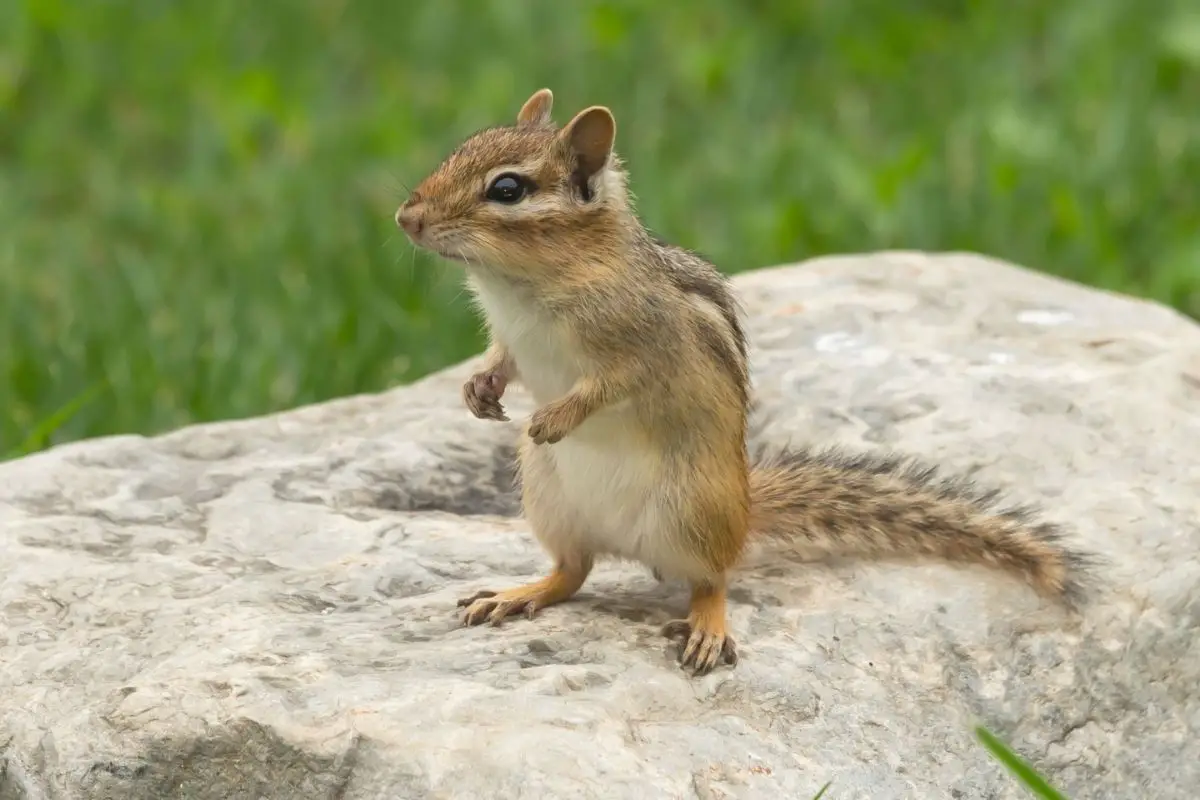
My first time actually seeing a chipmunk was at Glacier National Park in Montana. They were relatively easy to find along the trails and would scamper away in most cases. However, there were some that had learned how to get their food from tourists.
At trailheads, or at overlook areas, it was common to have a chipmunk come up to you and wait for you to throw them a crumb of bread or something. Some would even get aggressive. As aggressive as a five-ounce animal can at least.
There was a huge discrepancy between the healthy-looking fit ones in the wild, and the fat ones that could hardly walk through parking lots where tourists hung out. There are 25 species of Chipmunks, and three Genus: Eutamias, Tamias, and Neotamias.
Genus Eutamis
Siberian Chipmunk
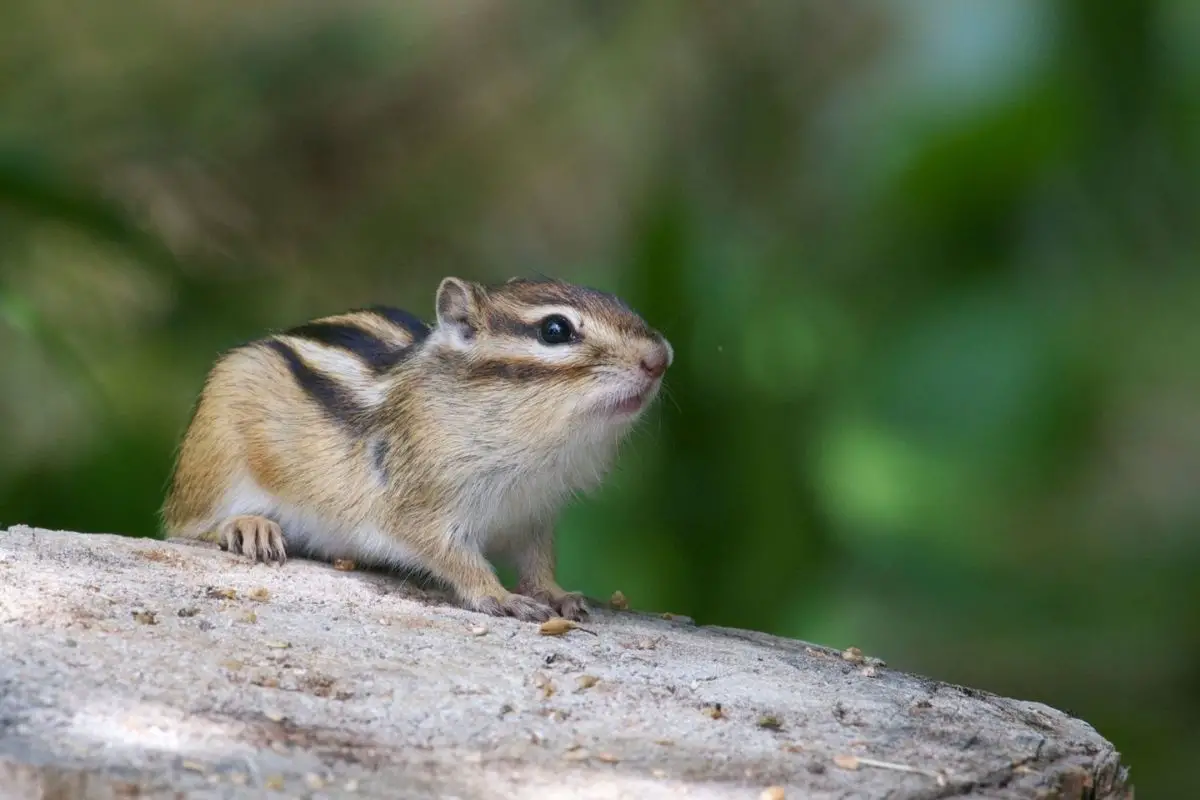
The Siberian Chipmunk is the only Chipmunk that lives outside of the North American continent. It lives in central Russia, parts of China, Korea, and Japan. The Siberian Chipmunk’s diet is not very different than his North American counterpart.
They like seeds, grain, fruit, and vegetables, and will eat small birds and lizards when they get a chance. In the wild, it is believed they eat about six times a day, and they spend most of their time looking for food. Like squirrels, they will store extra food in their cheeks, and hide things like acorns to eat later.
Siberian Chipmunks get their food from foraging, always on the lookout for anything they can chew on. In captivity, Siberian Chipmunks are known to live as long as 10 years, but in the wild, their lifespan is two to five years. Many are food for larger animals.
These animals are not nocturnal, they are active during the day and nap at various times. In winter, they do not hibernate, but will likely sleep much longer and eat less often. They may make a burrow in a log or in a bush, but some of them create underground tunnel systems.
Even when they have a system of tunnels, Siberian Chipmunks are individualistic and territorial about their own area. The Siberian chipmunk is between seven and nine inches long and can weigh between two and five ounces. Partly because they are active during the day, Siberian chipmunks are popular as pets in some areas.
In the 1970s, they were exported from Korea to Europe and sold as pets, and became popular. Many have been released, and colonies of Siberian Chipmunks can now be found in places like Belgium, France, and Germany. In one case, a zoo was closed in Holland, and the chipmunks were forgotten and they have become a large colony in the city of Tilburg. In 2016, the European Union declared it an invasive species and made importing, or releasing them, illegal.
Tamias
Eastern Chipmunk
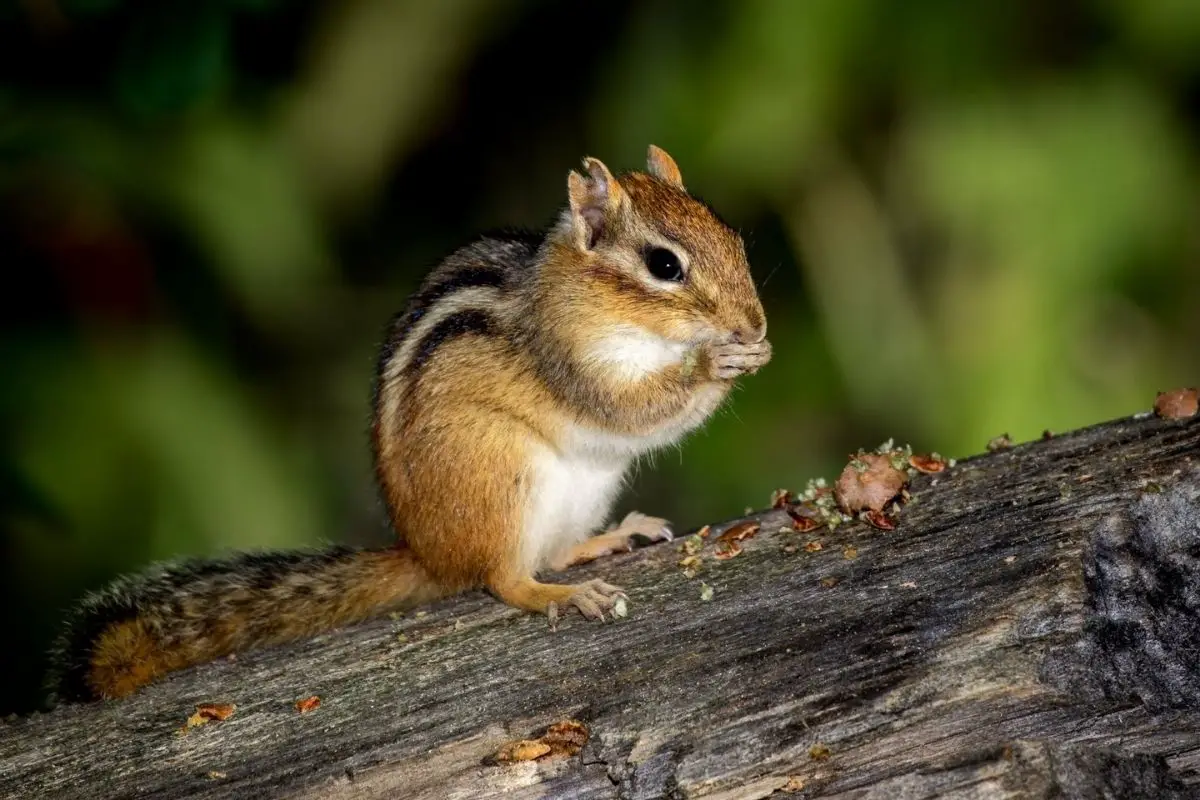
The eastern chipmunk lives in southeast Canada and the northeast United States. There are some that go as far south as Mississippi and as far west as the Dakotas. The Eastern Chipmunk has brownish red hair and has white stripes.
It looks more like a squirrel than most chipmunks, but much smaller. The eastern chipmunk eats nuts, acorns, fruits, berries, corn, seeds, and mushrooms. They will eat small bird eggs, insects, and snails at times.
They have extra room in their cheeks to hold food, and they tend to store food in their dens for the winter. It does not hibernate but does sleep a lot in winter. This chipmunk spends most of its time foraging for food.Eastern chipmunks live two to five years in the wild, but many are eaten by predators.
In captivity, they have lived as long as 10 years. The eastern squirrel likes to live in open forests, or on the edge of forests, often near cliffs or trees. The eastern chipmunk is a good climber and may make nests in trees at times.
Usually, they burrow under the ground and may have tunnels leading to nests underground. Like most other chipmunks, they are solitary or nomadic in behavior. They tend to have a space, but do not interact with other chipmunks a lot.
The eastern chipmunk is known for the noises it makes, chipping as they gather food, or making noises to warn others of danger that may be present. They are the most vocal of chipmunks.
Extinct species: Tamias Aristus
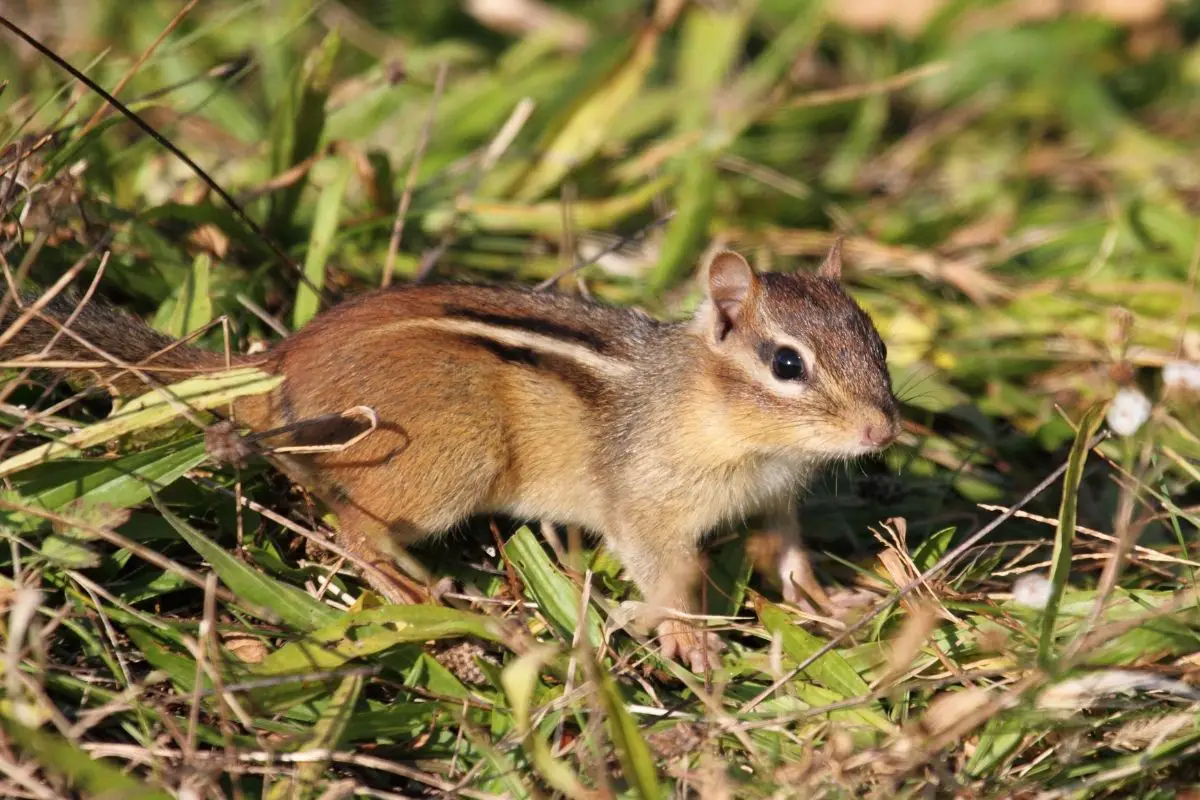
There is an extinct species that have been found in fossilized rock in Georgia, that is believed to be related to the Eastern Chipmunk.
Genus Neotamias
Least Chipmunk
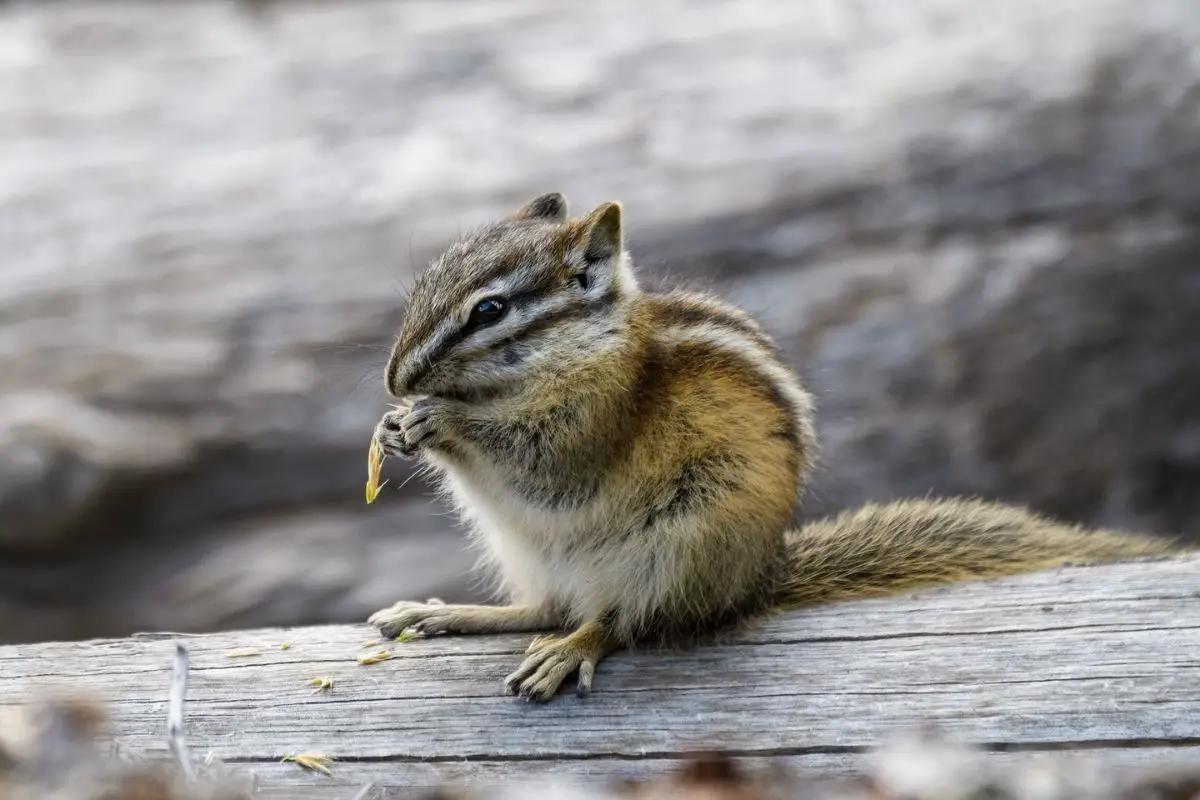
The Least Chipmunk gets its name because it is the smallest of the 25 known species of Chipmunk. It can grow to seven inches in length and weighs between one and two ounces. Females are often slightly larger than males.
They are distinguished by three dark stripes and two light strips on their faces, and four stripes along the side. The Least Chipmunk lives in central and northwest America, and in central Canada over a large area. They live in forests but like open areas, often living on the edge near clits and rivers.
This chipmunk eats fruit, grains, seeds, insects, and at times small birds. They spend most of their time foraging for food, and they become docile and friendly when fed by humans. They are able to keep extra food in their cheeks, and they store food for the winter in their burrows.
In captivity, least chipmunks are known to live 10 years, but it is not certain how long they live in the wild. Least chipmunks are good climbers and can have nests in trees just as squirrels do. They prefer burrows in the ground or in wood, but they can be in a tree when they want to.
While Least Chipmunks are friendly to humans when fed, adults who have lived in the wild do not make good pets.
Long-Ear Chipmunk
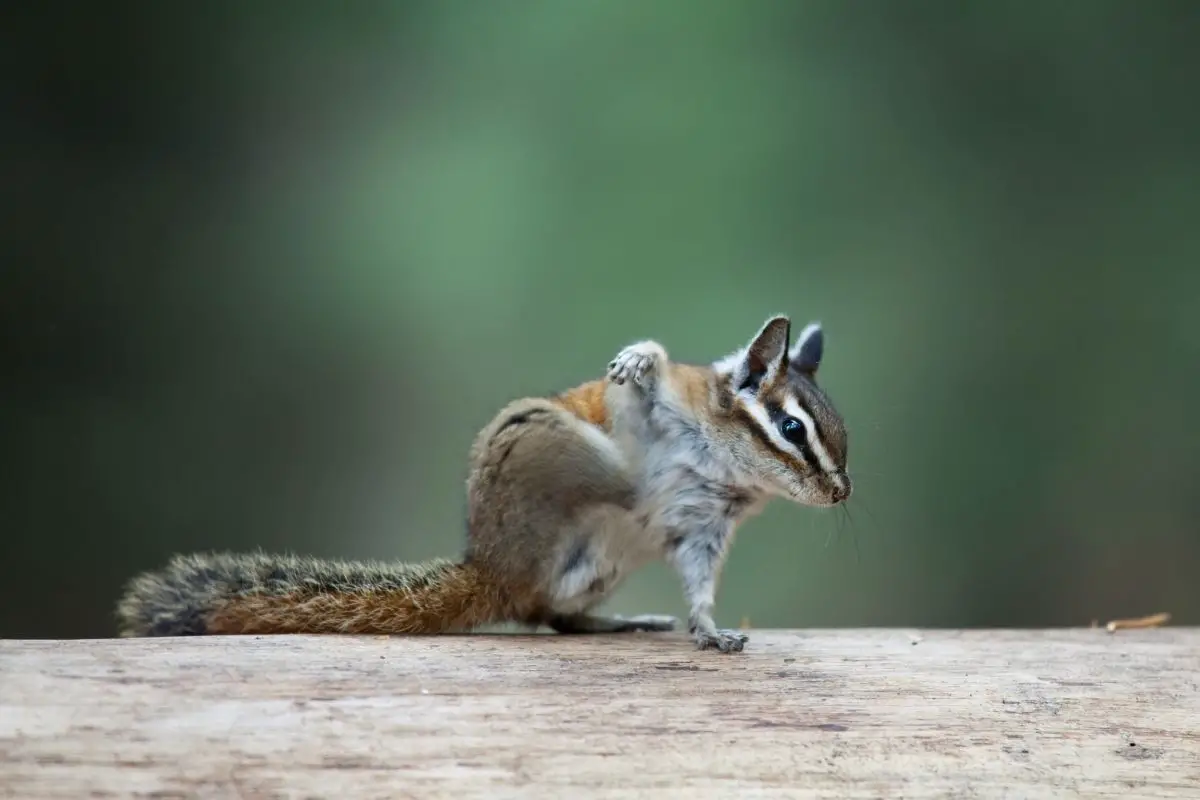
The long-ear chipmunk is classified in the squirrel family and is also known as the Sacramento Chipmunk. This variety has the biggest ears of any chipmunk. They can be found in the Sierra Nevada along the California-Nevada border, and as far north as the top of Oregon.
Their diet is similar to other chipmunks, eating fruits, seeds, vegetables, and many other plant-based foods. They tend to forage for food most of the time. They can grow to 10 inches in length, but more than half of that is their tail. This species weighs about three ounces, with the female being slightly larger. The long-ear chipmunk has bright white stripes and white hair around its ears.
They are diurnal, and active during the daylight hours. They are adept at climbing and making nests in trees at times, but more often they live in burrows in the ground. They hibernate from November to March after increasing their body weight by 20 percent.
Allen’s Chipmunk
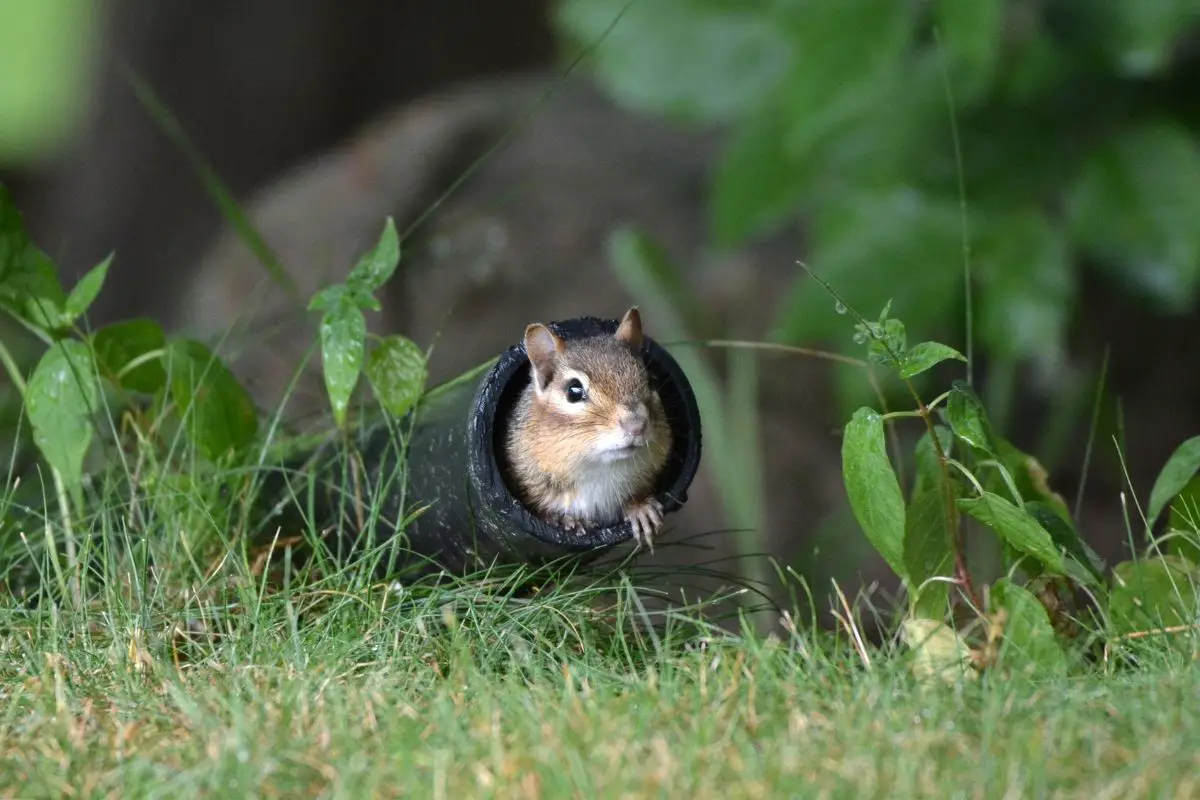
The Allen’s Chipmunk, or shadow chipmunk, lives in the same general area as the long-eared Chipmunk, but at higher elevations. This one stays 1500 meters above sea level and rarely goes lower. They live in dense moist forested areas, foraging for food on the forest floor.
They live in hollow trees or logs of various types of trees. The shadow chipmunk eats the same things that other chipmunks eat; fungi, seeds, fruits, nuts, and negative substances. They are among the larger chipmunks and are 10 inches in length and weigh about five ounces.
Their fur changes with the seasons. They have white stripes on a gray background, with one black stripe. In winter, their fur gets longer, denser, and less striking in color.
Alpine Chipmunk
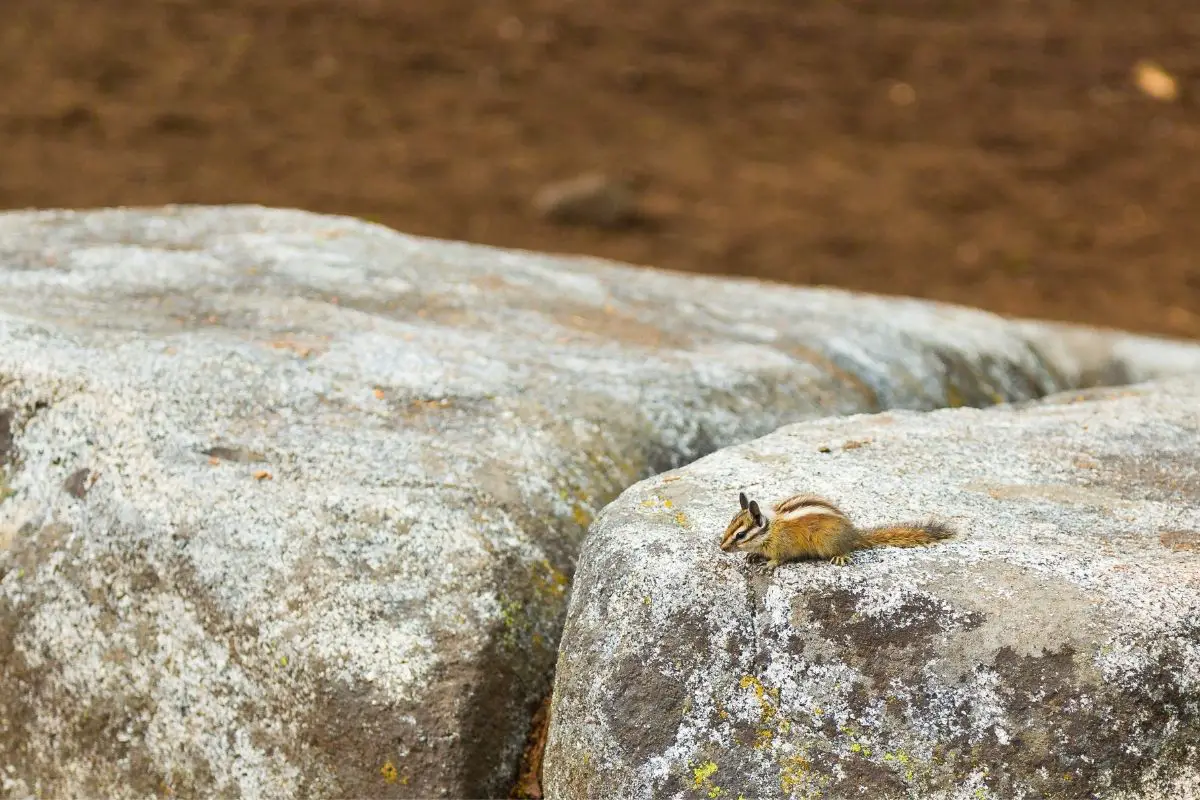
The Alpine Chipmunk lives in the same geographic area as the shadow and long-ear chipmunks but at higher altitudes — in the Siera Nevada Mountains of California. This one lives 2,300 meters above sea level and lives at the highest altitude of any chipmunk. While most chipmunks live in forests, this one lives in rocky areas high in the mountains.
The Alpine Chipmunk eats grasses, berries, and seeds. They are also known to eat the eggs of finches and sparrows when they can. They live in a very dry area and have adapted.
They do not need a source of water other than what they get from the food they eat. They do not hibernate, but they do store food and sleep for long periods of time in winter.
Buller’s Chipmunk
Buller’s chipmunk lives in central Mexico, from Guadalajara north to Monterrey, mostly in mountainous regions. They tend to live in forested areas around cities. Expanding cities in Mexico have reduced their habitat, and they are not listed as a threatened species.
Like most other chipmunks, they like to eat nuts, fruits, and other negative substances. They like to live in burrows in the ground or in hollow logs. These are not climbers and do not tend to live in trees as some do.
They hibernate in burrows or tunnels in the ground. Buller’s CHipmunks are grayer than the brown ones that live further north in the United States. They are of average size, becoming up to about 10 inches in length and weighing five ounces or less as adults.
Their population is believed to be declining as their habitat is threatened by expanding cities and wildfires.
Palmer’s Chipmunk
Palmer’s chipmunk is the only chipmunk listed as endangered. They live only in the Spring Mountains of southwest Nevada. In recent years, their already small population has declined, in large part due to the invasion of humans and civilization into their territory.
Many have been killed by domestic cats that people have brought to the area. Palmer’s chipmunks like forests and rocky areas like cliffs and mountain peaks. The population is not getting fragmented, but many adult chipmunks of this species are being killed.
This chipmunk lives in a very dry area, and scientists believe it gets its water from the food it eats. They eat vegetation, nuts, berries, and grains, and will eat insects, eggs, and other small creatures when they can. These chipmunks hibernate, but they need cool temperatures to do this.
Scientists believe they may soon not be able to hibernate because of global warming, and combined with a loss of habitat.
California Chipmunk
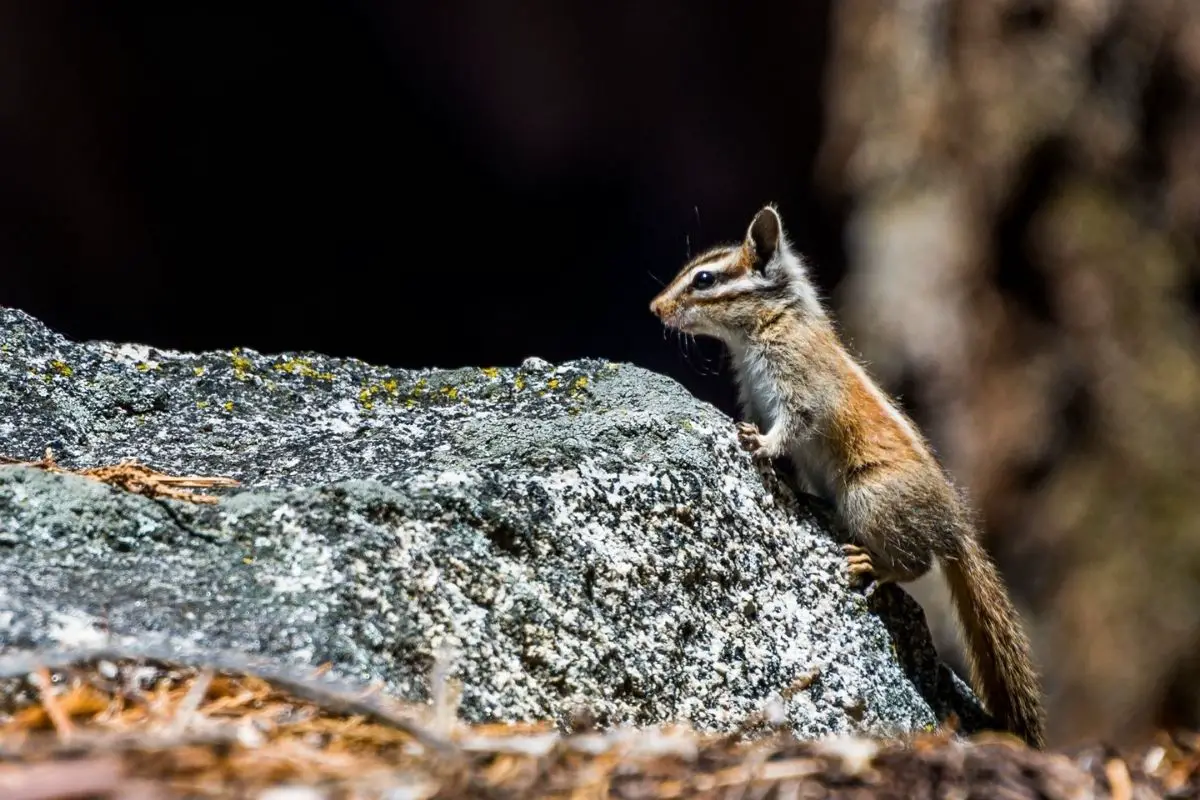
The California Chipmunk lives in the San Bernardina and Jan Jacinto Mountains of southern California. They reach into Baja California as well. Their geographic habitat is one of the smaller ones for chipmunks.
They are not endangered but have a smaller area than most. They live in the lower and upper Sonoran areas. They live in the Pinyon, Juniper, and Pine forests.
They like rocky outcroppings and other rocky areas to hide from predators. These chipmunks have a pale gray head with a light brown body, with fewer stripes than many other species. During the winter, the dorsal stripes are more pronounced.
This species of chipmunk does not hibernate but still stores food in the warmer months to have it available when food is scarce. Like other chipmunks, they like nuts, berries, grasses, and other vegetation.
Cliff Chipmunks
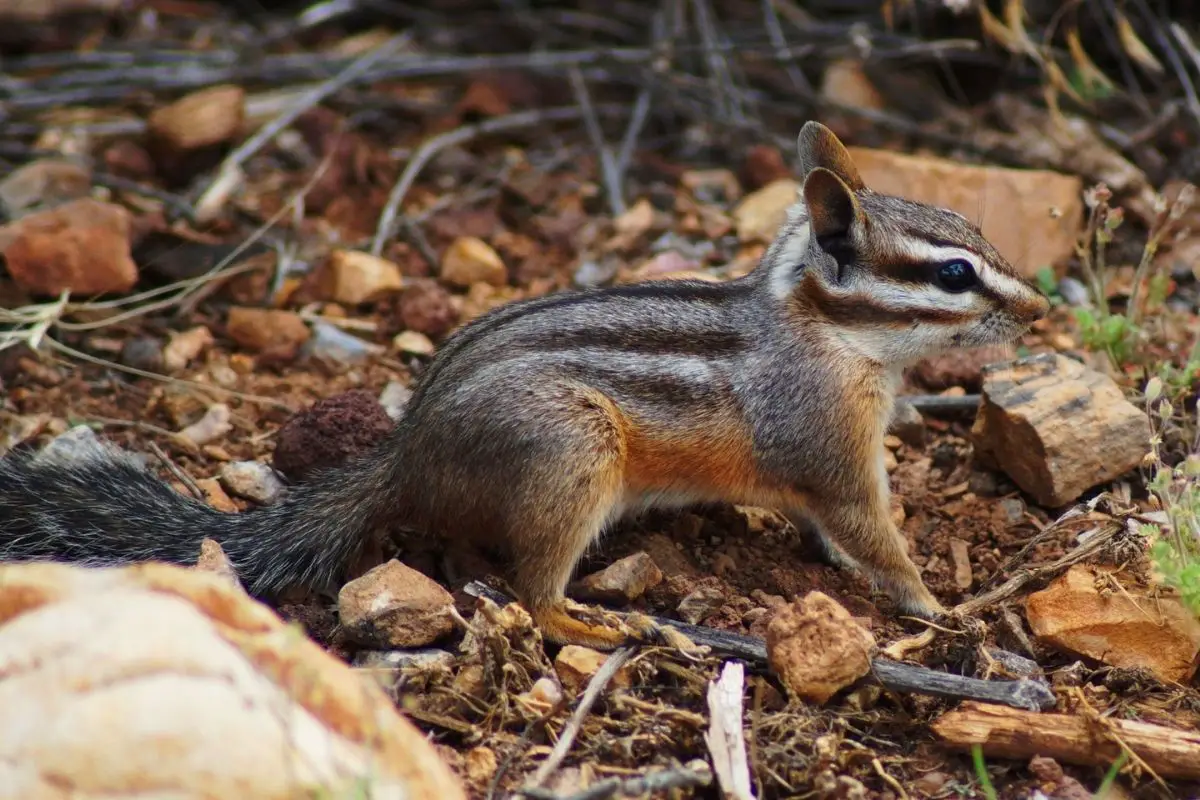
Cliff Chipmunks are small squirrels, and they get their name from their habit of living on and around cliffs. The Cliff Chipmunk lives in the Western United States, from Idaho to Mexico. They are very common on the walls of the Grand Canyon in Arizona.
They are generally solitary animals, but they may gather in groups at times, traveling together while foraging for food. They like to live in dens around the edges of cliffs or bluffs. They are active during the day, and store food like other animals of this kind do.
This species may also migrate depending on food sources. Cliff chipmunks eat berries, seeds, and acorns. They tend to be average size, about 10 inches long, and the females are a little bigger than the males.
They tend to be five ounces or lighter. These chipmunks can live as long as 12 years in captivity.
Colorado Chipmunk
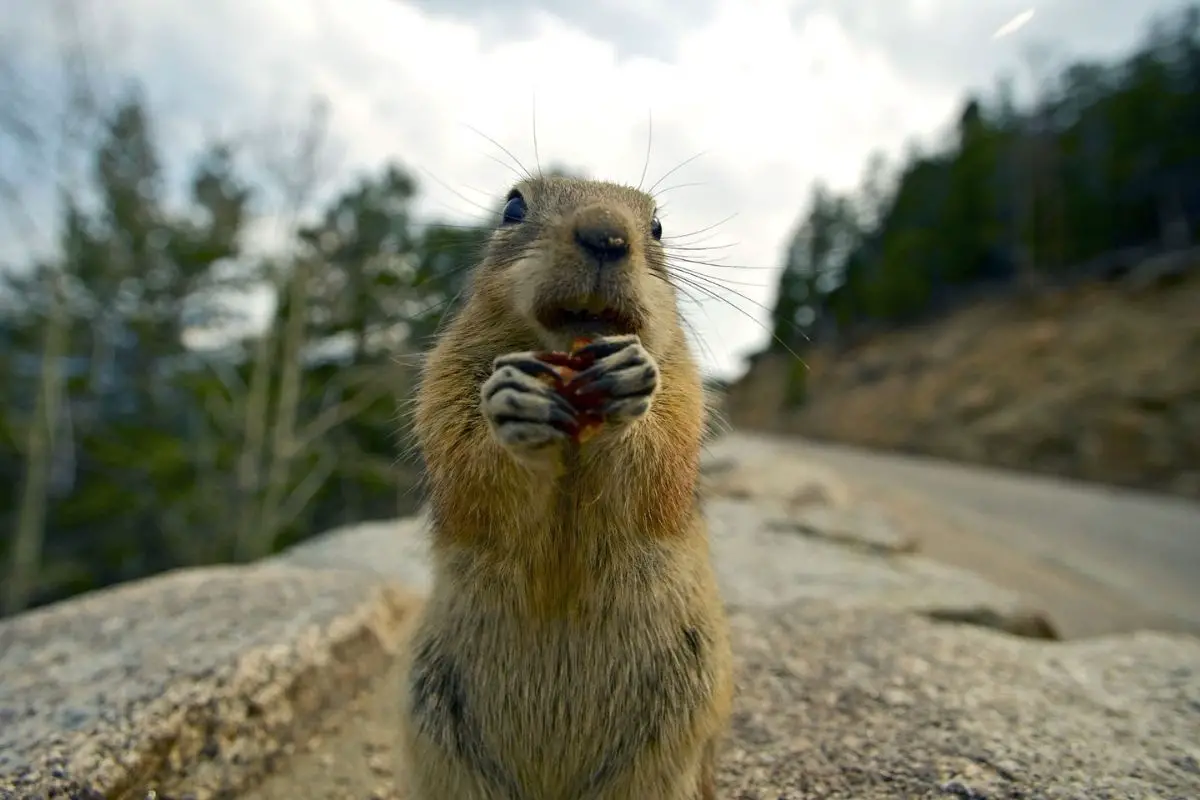
The Colorado chipmunk is part of the squirrel family and makes its home in Colorado, Utah, Arizona, and New Mexico. This species is the largest of the three kinds found in Colorado and weighs around five ounces as an adult. They may be 10 inches long with the tail included.
About the only difference between this species and a squirrel is the stripes on the face. This species does not have stripes down the body as most chipmunks do. There is also no size difference between males and females.
Colorado Chipmunks eat seeds, berries, flowers, and insects. They hibernate and collect food in the fall, storing it for winter. They like forests, woodlands, and tundra areas.
Colorado Chipmunks are solitary animals, interacting with other chipmunks only during the breeding season. They spend most of their time foraging for food, mostly in the early morning or late afternoon hours.
Durango chipmunk
The Durango Chipmunk is one of the smaller chipmunks, with adults being about six inches long and weighing around three ounces. They live in the Western Mexico mountains. A few have been spotted near the eastern coastal areas of Mexico.
They live in a dry mountainous area at relatively high elevations. Their lines are distinct, especially around the face. They have a short tail that is not bushy like many chipmunks. They like to eat seeds and nuts, and that seems to be their primary diet.
There are twice as many females as males, and the female is larger than the male. Durango chipmunks They are believed to live around three years in the wild. They are able to hide in small spaces around rocks and have a lot of protection against predators.
They have a relatively small area, but there are a lot of them in the areas where they live.
Gray collared chipmunks
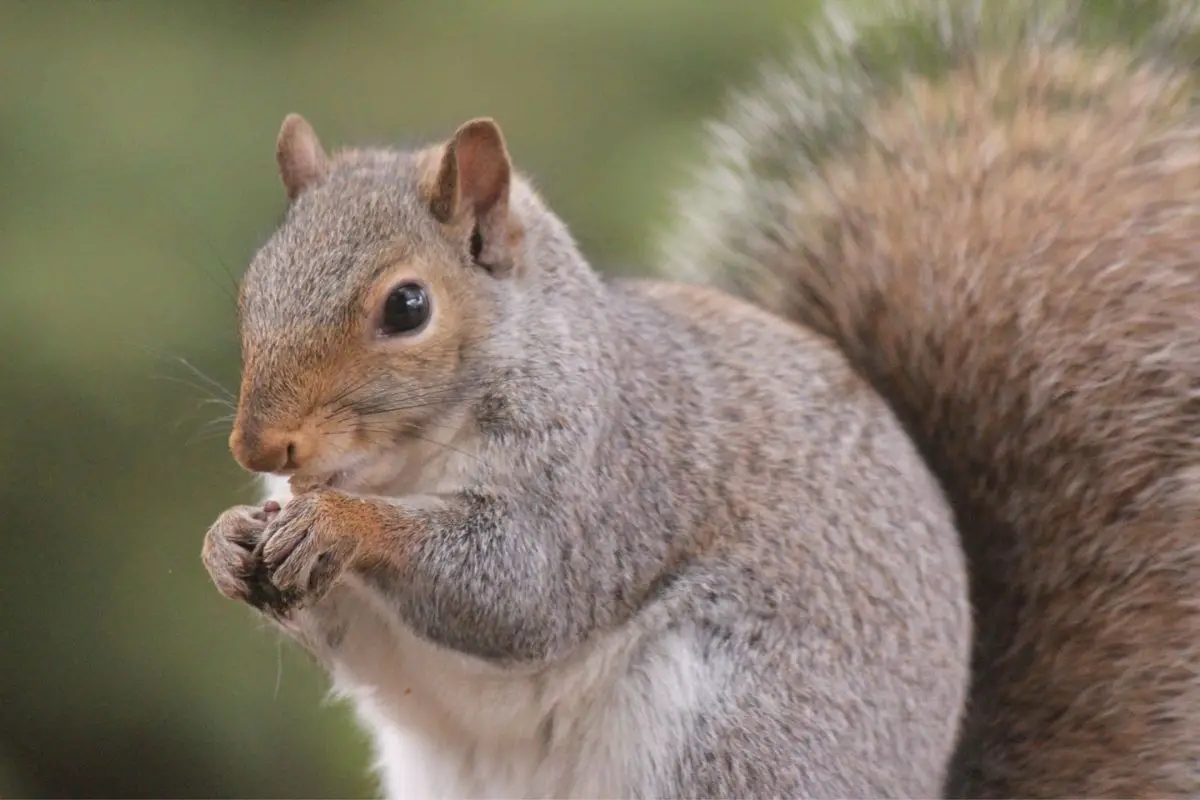
The Gray collared chipmunk lives in a relatively small area of Arizona and New Mexico. This one lives at higher elevations. They prefer forests but occasionally live in and around towns and residential areas.
They hibernate but may come out of their burrows on warm days during winter. They eat all forms of vegetation, and most of that is nuts. They like to live in hollowed-out logs or underground in what can become a long tunnel with several openings.
Some tunnels have been found that reach 30 feet. They have a nesting area, a food chamber, and some escape tunnels off their main one. They carry dirt away from the opening of their burrow to make the opening less conspicuous.
Gray collared chipmunks are solitary except during the breeding season. Most of their time is spent foraging for good. They are considered pests in areas populated by humans.
They can be destructive in gardens and yards. The gray collared chipmunk has a lot of gray and has stripes that are not as clearly defined as they are in some chipmunks. Their fur is gray around the shoulders, which gives them their name.
They can grow to nine inches in length, including the tail, and weigh around three ounces.
Gray-footed chipmunk
The Gray footed chipmunk gets its name from its gray feet. It has more gray than many chipmunks, but has a black and white stripe down its back, and has brown on its sides. The grey-footed chipmunk lives in the Sierra Diablo of New Mexico, the Guadalupe Mountains, and the Pecos area of Texas.
This chipmunk lives in temperate forests, making burrows in hollow logs or in tunnels they dig in the ground. They eat nuts, seeds, fruits, and other vegetative substances. Its habitat is dry, and often they get the water they need from the food they eat.
The chipmunks that live in the Guadalupe Mountains tend to be a little larger than the ones in the Pecos area of Texas, but have similar markings. The larger ones can be as long as 11 inches and weigh as much as five or six ounces.
The young are born in late summer, which can lead to many dying young if colder temperatures come too early.
Hopi Chipmunk
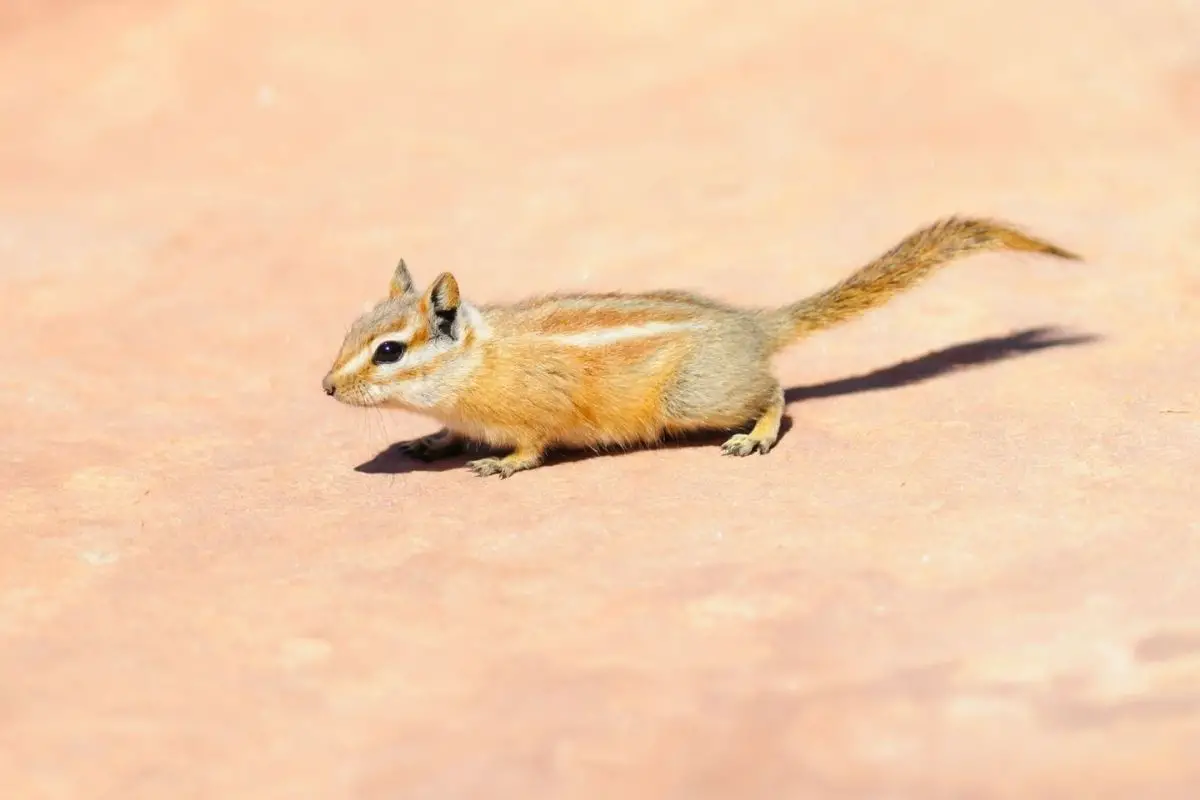
The Hopi Chipmunk lives in northern Arizona, eastern Utah, and some areas of Idaho and Colorado. A few have been spotted in the Canadian rocky mountains. The Hopi Chipmunk is one of the smaller chipmunks, with some adults barely more than eight inches long, and weighing around three ounces.
Hopi Chipmunks have an orange-like tint to their fur, along with some gray and brown. They have black stripes along with some orange stripes. They often live in dry rocky areas, and among juniper and pinyon pine trees, especially in Colorado.
They live in lower mountainous areas, at less than 2700 meters above sea level. Most of their time is spent foraging for food, looking for nuts, seeds, and fruits. Hopi Chipmunks hibernate for short periods of time and store food for the winter in their dens.
They interact with other species depending on habitat preference, which creates some distinct ecological communities. Hopi Chipmunks live for eight years or so in captivity, and less than that in the wild.
Lodgepole chipmunk
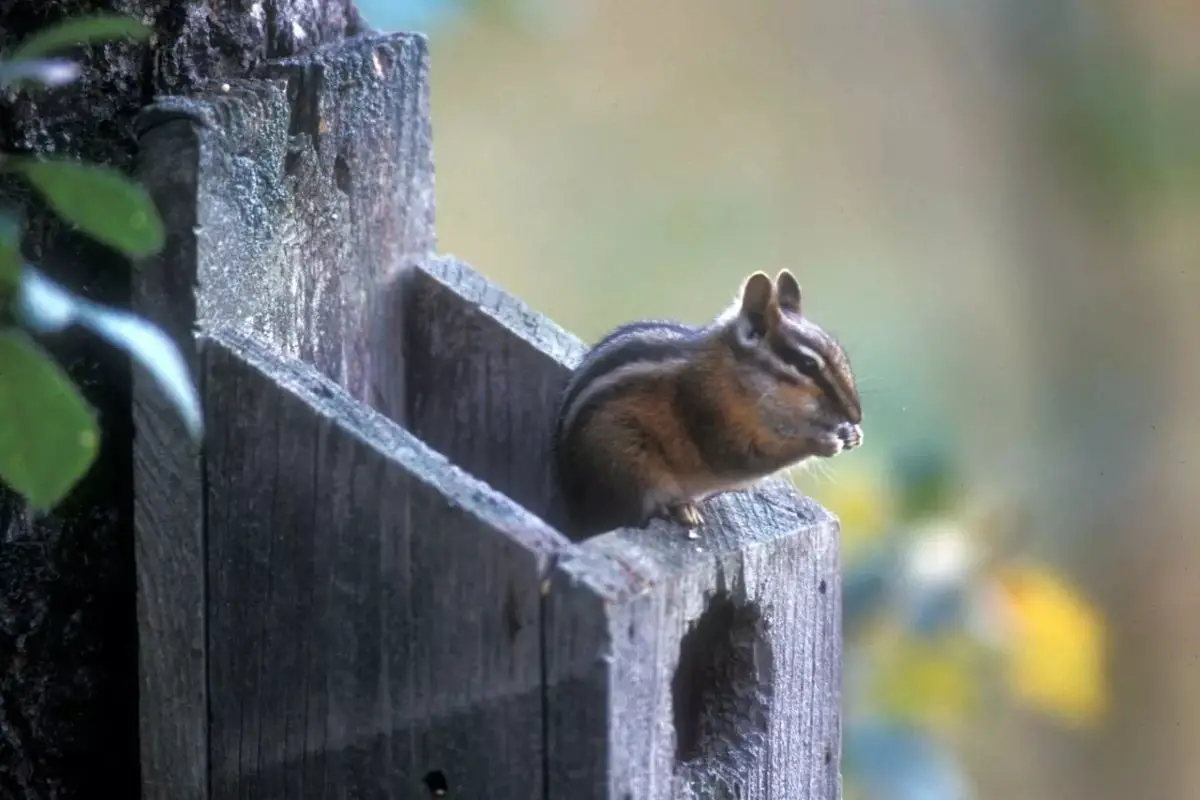
The Lodgepole chipmunk lives in several areas of California and is one of the smaller species. It lives between 5000 and 10000 feet high in the mountains. The Lodgepole chipmunk is about seven or eight inches long as an adult and weighs about three ounces.
It is most common in the Sierra Nevada, as well as the San Jacinto and San Gabriel mountains. It has white facial stripes against brown or gray fur. Its facial stripes are broader than many other species.
It has a dark black dorsal stripe and has an orange-like color on its sides. The Lodgepole chipmunk likes seeds, nuts, and fruits, and tends to live among various kinds of pine trees. They like the forest floor, living in hollowed-out logs, or burrows in the ground.
The lodgepole chipmunk has a short lifespan, often living through just one breeding season. This is due to predators, and to freezing to death. Many live for only a year, but some live for four or five years in captivity.
Merriam’s Chipmunk
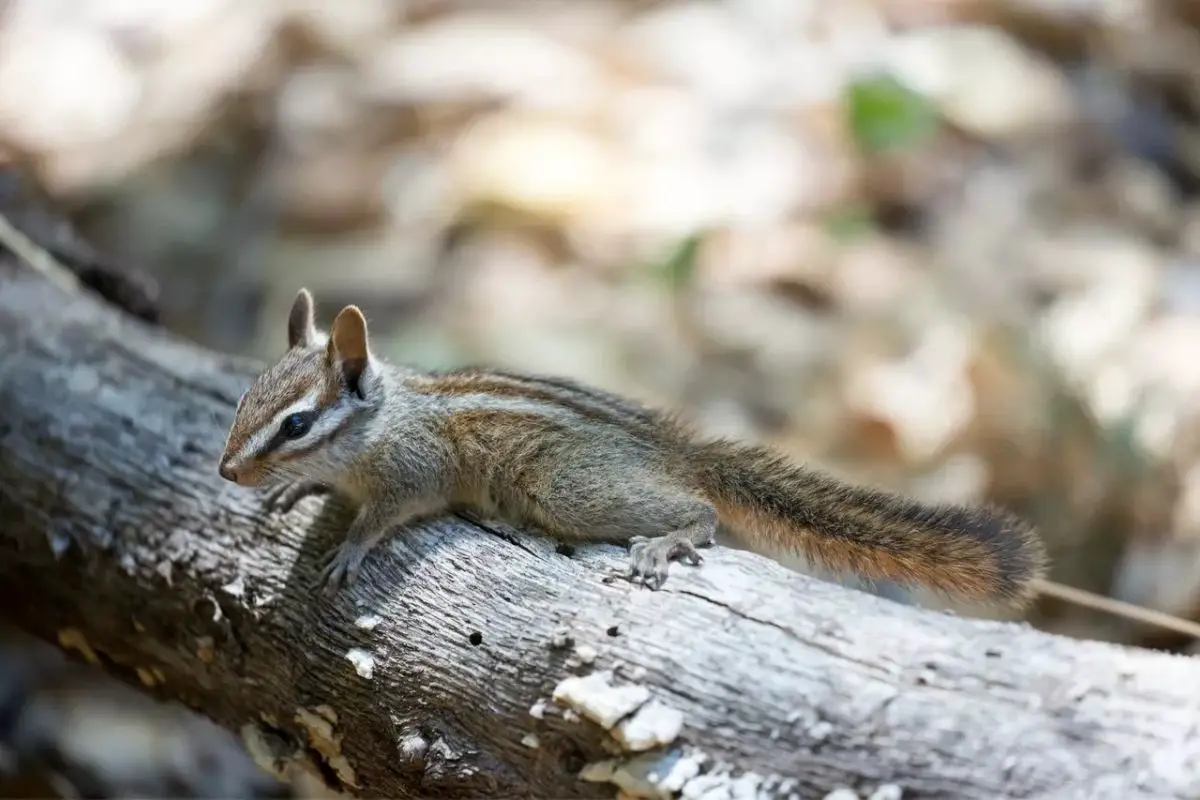
Merriam’s Chipmunks live in central and southern California, from the coastal areas into the Sierra Nevadas. They live below 2700 feet in forested areas. They live around trees, logs, rocks, and underbrush. They have a wide variety of types of habitats, especially when there is no competition for living areas.
These chipmunks are a combination of gray and brown, with dark brown stripes along their backs. They have white fur underneath, and their tail is long and bushy. The tail is often a dull white around the edges.
There is some diversity within the species. Those living in more humid areas of the redwood forests are darker than those living in forests or the Sierra Nevada. Merriam’s chipmunks are relatively small at five or six inches, and up to three ounces.
Merriam’s chipmunks have a more elaborate mating ritual that involves the male rubbing his face against the female’s face in a prelude to copulating. Merriam’s chipmunks are more social than many chipmunks. They may share foraging areas with others.
They shelter at night in natural cavities and forage during the day close to their shelter.
Panamint chipmunk
The Panamint chipmunk lives in the desert mountains of southeast California and western Nevada. They have more gray than many chipmunks and look more like a squirrel with their long orange-brown bushy tail. They have orange on their sides and just a couple of long dark stripes along their backs.
They are small chipmunks, with adults growing to about five inches long, not counting a tail that can be three or four inches. They weigh around three ounces. These chipmunks like nuts, seeds, and fruit, and will eat any negative substance.
They like living among rocks and often live among pinyon pine trees. They may or may not hibernate depending on the environment, but will be less active in very hot or cold periods. They survive in areas that are dryer and hotter than those other chipmunks can tolerate.
Red-Tailed Chipmunk
The Red-Tailed chipmunk gets its name from its long reddish bushy tail. It has orange-red fur, with black and white stripes along its back. This chipmunk lives in Southwest Canada, Montana, and Washington.
Red-Tailed chipmunks like dense forests, and edges or openings in forests. They like living in hollowed logs and around pine trees. They eat seeds and like to gather and store acorns for the winter.
They are the most common chipmunk in Idaho and are plentiful in mountainous regions. They are small chipmunks, weighing around two ounces and not more than four or five inches long as an adult. This chipmunk lives for or five years in the wild, but has lived eight years in captivity.
They do not hibernate but become less active in the winter months. One unusual behavior is to roll side to side in the sand, almost burying themselves in what looks like a sand bath.
Siskiyou Chipmunk
The Siskiyou Chipmunk lives in northern California and southern Oregon. They are mid-sized chipmunks, at about seven inches long and three ounces. This species has five dark and four light stripes down its back.
Their fur is brown other than the stripes. They have three brown stripes on their faces. They like living in hollowed logs or burrows in the ground.
They live on the forest floor but can climb trees for food or when fleeing predators. They like nuts, seeds, and other types of vegetation. They store food in burrows and most of their time is spent foraging.
Sonoma Chipmunk
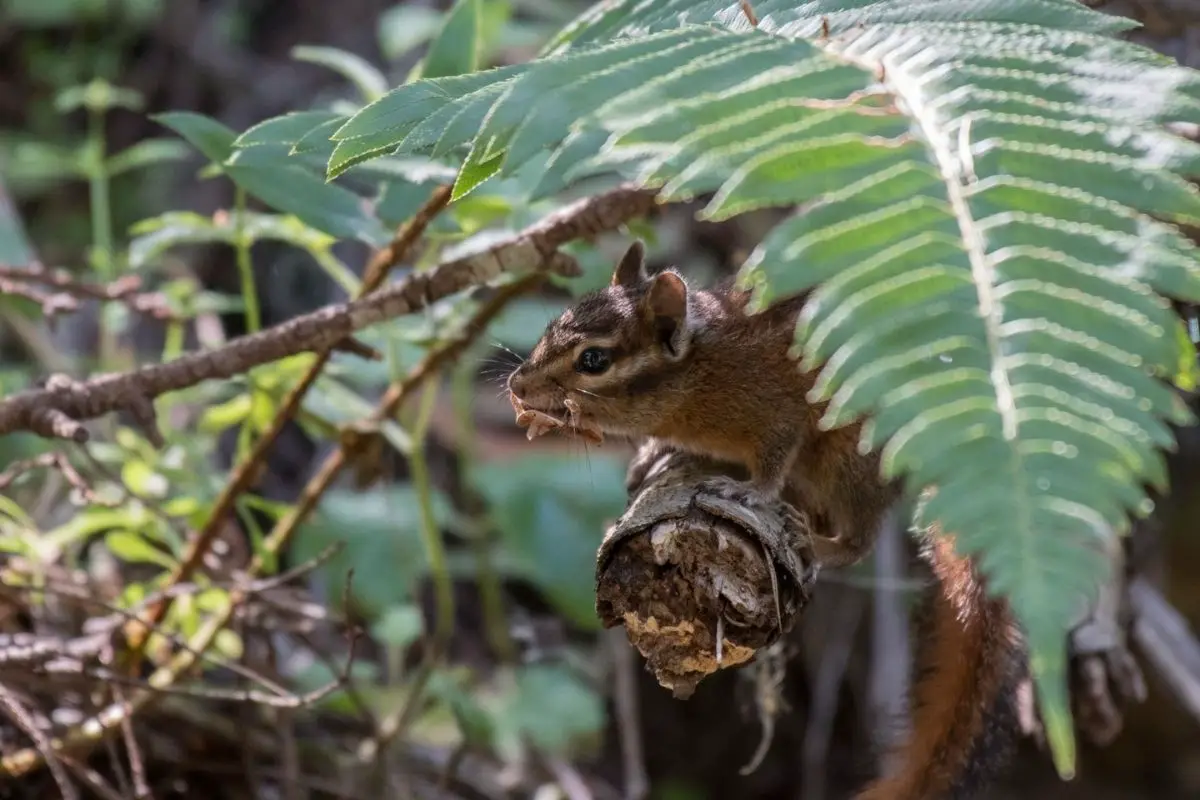
The Sonoma Chipmunk lives in northwest California, in a relatively small area of the state. This chipmunk looks much like a brown squirrel except for its size. It has dark brown fur, with darker brown or black stripes on its back.
It has a long bushy tail and lighter stripes on its face. Their fur is darker in winter. They live in forested areas around pine and laurel trees.
They are solitary animals except during the breeding season. They live in burrows in the ground but make nests in trees at times. They do not hibernate but do sleep more in the winter.
Townsend’s Chipmunk
The Townsend Chipmunk lives in the pacific northwest, mostly in Washington and Oregon. Some live in the lower areas of British Columbia. They are light brown with dark stripes down the back.
Their tail is long and such and a darker brown. Light stripes cover their faces. They live in dense hardwood forests, either in logs or burrows, they have created in the ground. They are one of the larger chipmunks, with a length of about 10 inches and may weigh up to five ounces.
Townsend Chipmunks hibernate and store food for the winter in the burrows they have dug. They like nuts, seeds, and berries. They live two to seven years in the wild, and the availability of food controls their lifespan and population more predation.
Uinta chipmunk
The Uinta Chipmunk lives in various parts of eight western states, from California to Colorado, and Montana. They like higher elevations, above 2500 feet, and live in pine-tree areas. They like logs and brush for foraging areas, and as a place to make a burrow.
They nest in tree cavities at times. Uinta chipmunks are only for or five inches long and weigh around two ounces when adults. They are very similar to the eastern chipmunk but have lighter dorsal stripes, and are a lighter brown than other species.
They gather food in their cheek pouches and can run at full speed with that food in their mouth. They store their food and hibernate during winter. They are tree dwellers during the day when they are active.
Yellow-cheeked chipmunk
The Yellow-Cheeked chipmunk is also known as the redwood chipmunk and lives in the coastal areas of northern California and among the redwood forest. This chipmunk has brown fur with white and black stripes on its face and back. The yellow cheeked chipmunk likes berries, nuts, and fruits. It lives in logs or burrows in the ground.
This species lives for three or four years and is about the average size of a chipmunk. It does not hibernate but is largely inactive in winter. They have networks of tunnels, but nesting areas have not been found.
They are solitary animals except for breeding.
Yellow Pine Chipmunk
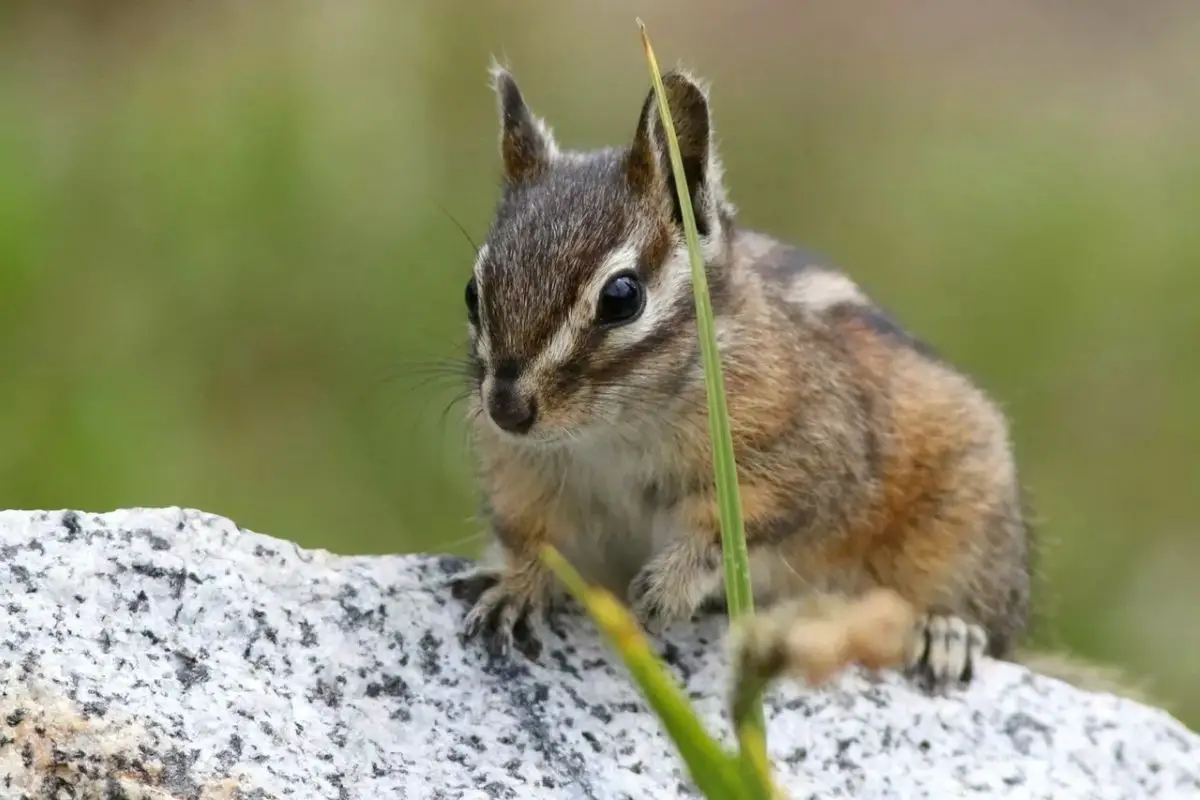
The Yellow Pine Chipmunk lives in California and some other parts of the western United States and Canada. They live in brushy areas and may live on the ground or in trees. They are called yellow pine chipmunks because they tend to like that kind of tree more than other trees.
This chipmunk has gray fur with black and white stripes on its face and back. They are about eight inches long and weigh about three ounces. They eat nuts, berries, seeds, and fungus. They hibernate and wake up at times to eat during the winter. They are very active, and on cloudy days may be active all day long, foraging for food.
When greeting each other, they touch noses and sniff each other. They are believed to live three to five years in the wild, but they have many predators.



